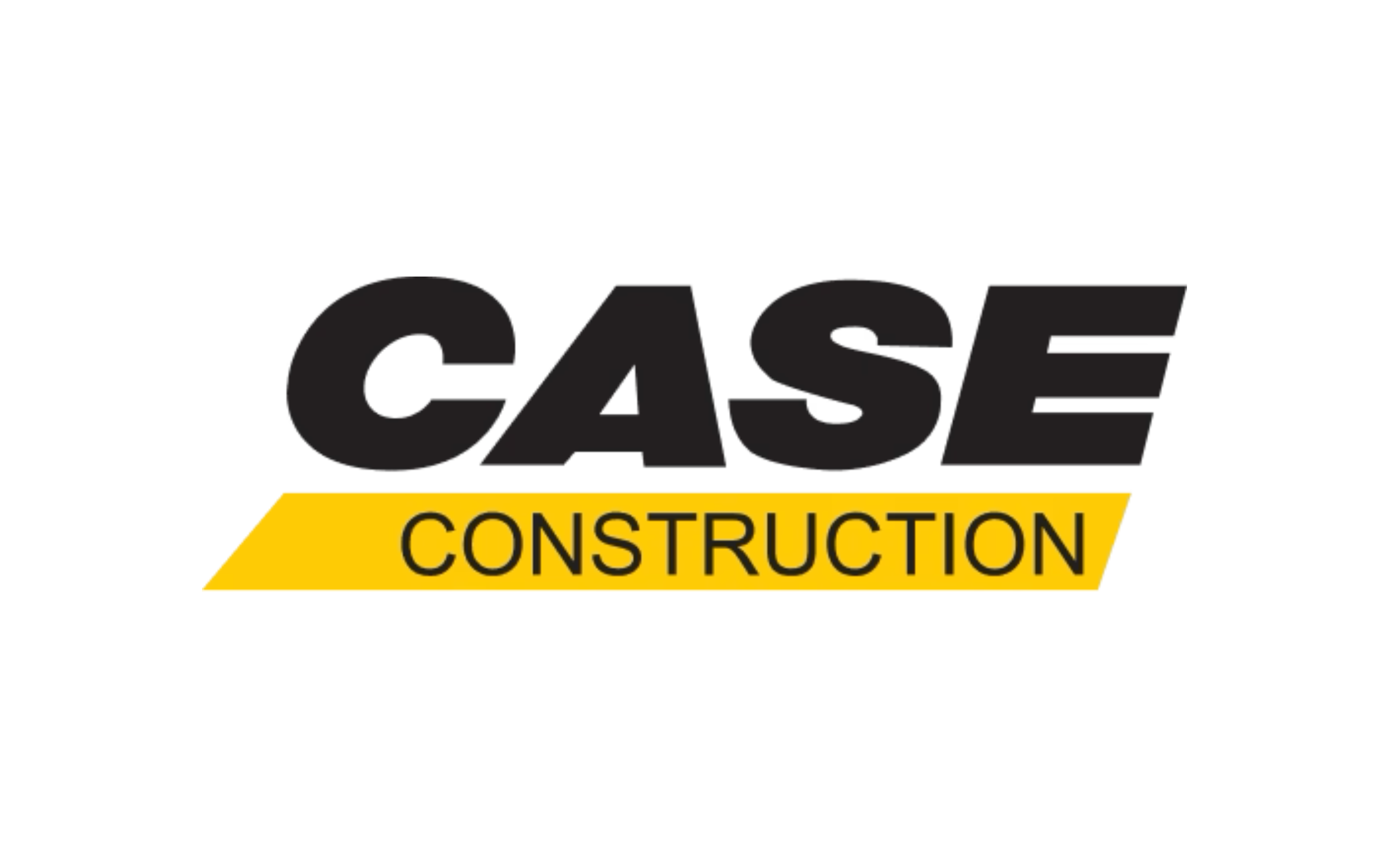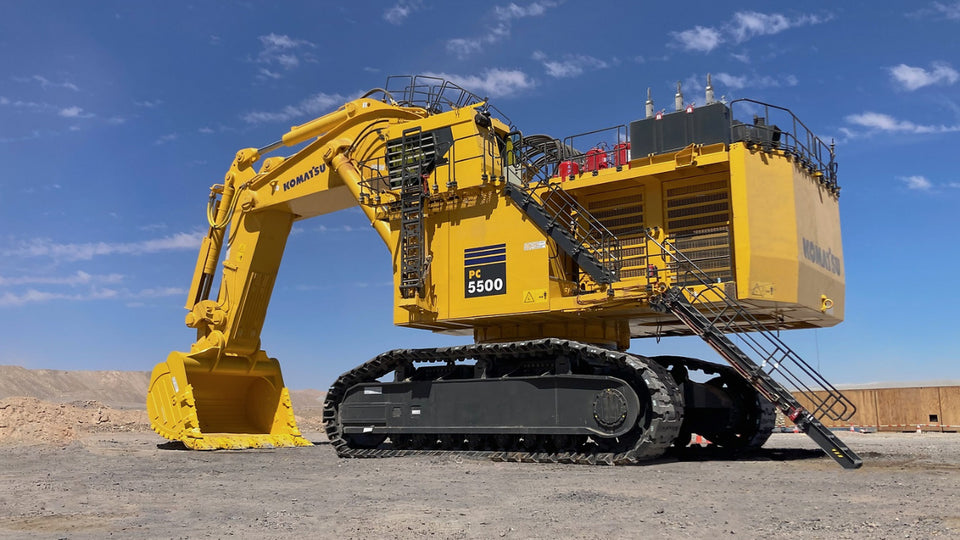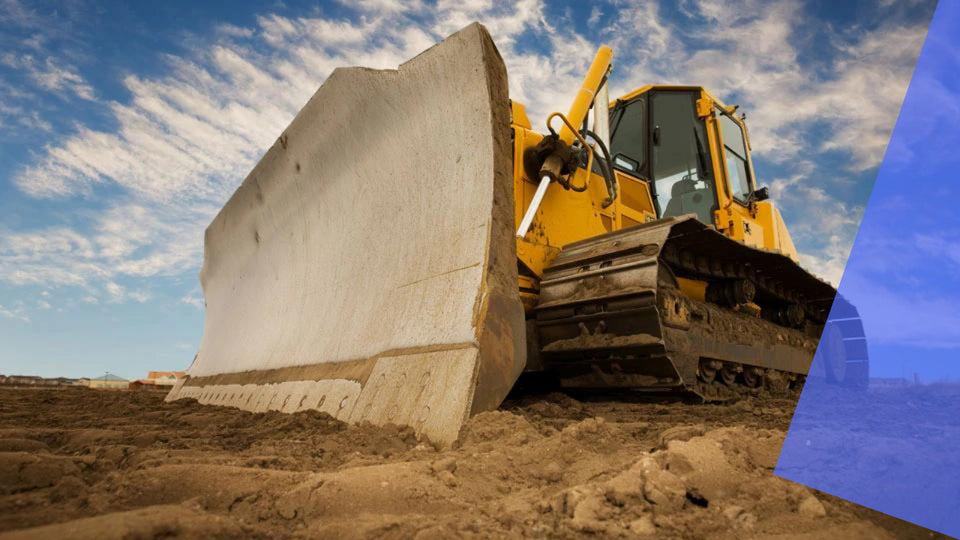Do you want to keep your Case final drive travel motor running strong for years to come?
Brush aside forgetfulness and prioritize regular check-ins. Standing idle on a critical project because of avoidable equipment failure is a nightmare scenario that can be detrimental to your timeline and budget.
Case final drive motor is only as good as its longevity, so we're about to share the secrets to making it last. Motor failure can hit your operations like a ton of bricks. So take proactive steps to prevent it: keep a watchful eye on performance, make timely repairs, and foster a culture of equipment TLC.
Ready to maximize the longevity and efficiency of your Case machine? Let's dive in.
5 Final Drive Motor Troubleshooting Tips to Extend Case Equipment Lifespan
When it’s time to transfer power to the wheels, final drive motors take center stage. With precision hydraulics, Case construction equipment gets the job done right - tracks gripping the ground, moving flawlessly, and wasting no time. Like any machine, motors have a limited lifespan and will eventually show signs of wear - but ignoring these red flags can lead to expensive surprises down the road.
Follow these tips based on our years of experience selling final drive motors, you can extend the lifespan of your Case final drive motors and keep your equipment running at peak performance.
1. Regularly inspect oil levels and quality
Maintaining the proper oil level and quality is critical for the health of your final drive motor. Low oil levels can cause increased friction and wear, while contaminated or degraded oil can lead to corrosion and damage to internal components and eventually final drive motor failure.
Check oil levels at least every 100 hours and top up as needed
Make it a habit to check the oil level in your final drive motor at least every 100 hours of operation. If the oil level is low, top it up with the manufacturer-recommended oil type and viscosity. Be careful not to overfill, as this can cause leaks and put extra pressure on the seals.
Analyze oil quality monthly for contaminants or degradation
In addition to checking oil levels, it's essential to analyze the oil quality monthly. Look for signs of contamination, such as metal particles, water, or dirt, which can indicate internal wear or external leaks.
Also, check for oil degradation, which can be caused by excessive heat or extended use. If the oil appears dark, gritty, or has a burnt smell, it's time for a change.
Replace oil per manufacturer's recommended intervals
Follow the manufacturer's recommended oil change intervals for your specific Case model. These intervals are based on extensive testing and are designed to ensure optimal performance and longevity. Don't be tempted to extend these intervals to save money, as this can lead to accelerated wear and costly repairs down the line.
2. Monitor motor temperature and performance
Overheating is a common cause of final drive motor failure, as it can cause the oil to break down and the internal components to expand and seize. By monitoring the motor's temperature and performance, you can detect potential issues early and take corrective action before they lead to a catastrophic failure.
Install temperature sensors to detect overheating early
Consider installing temperature sensors on your final drive motors to monitor their operating temperature in real time. These sensors can alert you if the temperature exceeds a predetermined threshold, allowing you to shut down the equipment and investigate the cause before any damage occurs.
Track motor speed and torque output for inconsistencies
Regularly check the motor's speed and torque output using a diagnostic tool or the equipment's onboard computer. If you notice any inconsistencies, such as a sudden drop in speed or torque, or unusual fluctuations, it could indicate a problem with the motor or the hydraulic system. Address these issues promptly to prevent further damage.
Address any temperature or performance issues promptly
If you detect any temperature or performance issues, don't ignore them. Shut down the equipment and investigate the cause, whether it's a clogged oil filter, a failing bearing, or a hydraulic system problem. Make the necessary repairs or adjustments before putting the equipment back into service.
3. Keep the motor clean and well-ventilated
A clean and well-ventilated final drive motor is essential for proper cooling and preventing the buildup of debris and contaminants. Regularly cleaning the motor and ensuring adequate airflow can help extend its lifespan and maintain optimal performance.
Remove debris and built-up dirt from the motor housing
During routine maintenance, take the time to remove any debris, such as dirt, gravel, or plant matter, from the motor housing and surrounding area. This debris can trap heat and prevent proper cooling, leading to overheating and premature wear.
Ensure adequate airflow around the motor for cooling
Make sure there is adequate airflow around the final drive motor to facilitate cooling.
Clean the motor's external parts during routine maintenance
During routine maintenance, clean the motor's external parts, such as the housing, and hydraulic lines, with a pressure washer or compressed air. This will remove any built-up dirt or grease that can trap heat and accelerate wear.
4. Inspect and replace worn or damaged components
Regular inspections of the final drive motor's internal components can help you identify wear or damage before it leads to failure. By replacing worn or damaged parts promptly, you can extend the motor's lifespan and avoid costly downtime.
Check gears, bearings, and seals for wear or damage
During scheduled maintenance, have a qualified technician inspect the motor's gears, bearings, and seals for signs of wear or damage. Look for pitting, scoring, or unusual wear patterns on the gear teeth, and check for play or roughness in the bearings. Also, inspect the seals for any cracks, tears, or leaks.
Replace any compromised parts before they cause further issues
If any components are found to be worn or damaged, replace them immediately, even if they haven't reached their scheduled replacement interval. A compromised part can cause accelerated wear on other components and lead to premature failure.
Follow the manufacturer's guidelines for component replacement
When replacing components, always follow the manufacturer's guidelines for your specific Case model. Use genuine Case parts or approved aftermarket alternatives that meet or exceed OEM specifications.
Schedule regular professional maintenance
While routine inspections and maintenance can be performed in-house, it's essential to have your final drive motors professionally serviced at regular intervals. A qualified technician can identify potential issues that may not be apparent to the untrained eye and perform necessary repairs or adjustments.
Have a qualified technician inspect and service the motor
Schedule regular professional maintenance with a qualified Case technician or an authorized service provider. During these visits, the technician will perform a thorough inspection of the motor, including checking the gears, bearings, seals, and hydraulic components for wear or damage.
They will also perform any necessary adjustments, such as setting the gear backlash or preload, and replace any worn or damaged parts.
Stick to the manufacturer's recommended maintenance schedule
Follow the manufacturer's recommended maintenance schedule for your specific Case model. These schedules are based on extensive testing and real-world experience and are designed to ensure optimal performance and longevity. Don't be tempted to extend these intervals to save money, as this can lead to accelerated wear and costly repairs down the line.
Address any potential problems identified during professional servicing
If the technician identifies any potential problems during the professional servicing, such as unusual wear patterns or leaks, address them promptly. Don't wait until the next scheduled maintenance or until the problem becomes more severe. By addressing issues early, you can prevent them from causing further damage and extend the life of your final drive motor.
By implementing these five troubleshooting tips, you can significantly extend the lifespan of your Case final drive motors and keep your equipment running at peak performance. Regular inspections, proper maintenance, and timely repairs are key to avoiding costly failures and minimizing downtime.
If you give it the right care and attention, your final drive motors can provide years of reliable service, maximizing your equipment's productivity and profitability.
3 Most Common Causes of Final Drive Motor Failure in Case Machines
Final drive motors in Case machines are essential components that enable smooth operation and precise movement. However, these motors can fail prematurely if not properly maintained or subjected to adverse conditions. Understanding the common causes of final drive motor failure is crucial for operators and maintenance personnel to prevent costly downtime and repairs.
1. Contaminated or Degraded Hydraulic Fluid
One of the primary reasons for final drive motor failure is contaminated or degraded hydraulic fluid. Dirt, debris, or water can enter the hydraulic system through various means, such as worn seals, improper maintenance practices, or environmental factors. These contaminants can cause excessive wear on the motor's internal components, leading to reduced efficiency and eventual failure.
The Importance of Proper Filtration
Inadequate filtration is another factor that contributes to hydraulic fluid contamination. Case machines rely on hydraulic filters to remove particulates and maintain fluid cleanliness. If these filters are not regularly replaced or are of insufficient quality, contaminants can circulate throughout the system, causing damage to the final drive motors and other hydraulic components.
In addition to contamination, hydraulic fluid can degrade over time due to overheating or oxidation. When fluid is subjected to high temperatures or prolonged exposure to air, its chemical properties can break down, leading to the formation of sludge and varnish. These byproducts can clog filters, valves, and motor passages, resulting in reduced performance and potential failure.
2. Overloading or Misuse of the Equipment
Another common cause of final drive motor failure is overloading or misuse of the equipment. Case machines are designed to operate within specific load capacities and operating parameters. When these limits are exceeded, the final drive motors can be subjected to excessive stress and wear, leading to premature failure.
Operating Beyond Rated Capacity
Operators must be aware of the machine's rated capacity and avoid overloading the equipment. Attempting to lift or move loads that exceed the machine's specifications can put undue strain on the final drive motors, causing them to work harder and generate more heat. Over time, this excessive stress can lead to component failure and costly repairs.
Subjecting Motors to Shock Loads
Improper operation, such as sudden reversals or abrupt stops, can also contribute to final drive motor failure. When an operator quickly shifts from forward to reverse or vice versa, the final drive motors are subjected to shock loads that can cause internal damage. Similarly, abruptly stopping the machine while under load can put excessive stress on the motors, leading to premature wear and potential failure.
3. Lack of Proper Maintenance
Regular maintenance is essential for ensuring the longevity and reliability of final drive motors in Case machines. Neglecting to adhere to recommended service intervals, failing to inspect and replace worn components, or ignoring warning signs of potential issues can all contribute to motor failure.
Adhering to Service Intervals
Case provides detailed maintenance schedules for their machines, outlining the recommended service intervals for various components, including final drive motors. Failing to follow these guidelines can result in the accumulation of wear and tear, leading to decreased performance and eventual failure. Regular oil changes, filter replacements, and inspections are crucial for maintaining the health of the final drive motors.
Replacing Worn Components
As final drive motors operate, their internal components, such as gears, bearings, and seals, are subjected to wear. Over time, these components can degrade, leading to increased clearances, reduced efficiency, and potential failure.
Regular inspections can help identify worn components before they cause significant damage. Replacing these parts promptly can prevent further wear and extend the life of the motor.
3 Benefits of Regular Final Drive Motor Maintenance for Case Equipment
Regular maintenance of final drive motors in Case equipment is essential for ensuring the longevity, performance, and cost-effectiveness of these critical components. By proactively addressing potential issues and keeping the motors in top condition, operators can reap significant benefits that directly impact their bottom line.
1. Increased equipment longevity
One of the primary advantages of regular final drive motor maintenance is the extension of the equipment's overall lifespan. By conducting routine inspections, cleanings, and necessary repairs, operators can prevent premature wear and tear on the motor components. This proactive approach helps identify and address potential issues before they escalate into more serious problems that could lead to motor failure.
According to a study by the Association of Equipment Manufacturers (AEM), proper maintenance can extend the life of construction equipment by up to 30% compared to neglected machines. This statistic highlights the significant impact that regular care can have on the longevity of final drive motors and the Case equipment they power.
Preventing premature component wear
Regular maintenance tasks, such as checking and replacing worn seals, bearings, and gears, are crucial for preventing premature wear on final drive motor components. By catching these issues early, operators can avoid more extensive damage that could require costly repairs or even complete motor replacements.
In a survey conducted by Construction Equipment Magazine, 78% of respondents reported that preventive maintenance was the most effective strategy for extending the life of their equipment. This finding emphasizes the importance of proactive care in maximizing the lifespan of final drive motors and the machines they power.
2. Improved machine performance and efficiency
Regular final drive motor maintenance not only extends the life of the equipment but also ensures optimal performance and efficiency. When motors are well-maintained, they operate at peak capacity, delivering the necessary power and torque to keep the machine running smoothly.
Maintaining optimal motor operation
By keeping final drive motors clean, lubricated, and properly adjusted, operators can maintain optimal motor operation and power output. This translates to better machine performance, increased productivity, and improved fuel efficiency.
Ensuring precise control and maneuverability
Well-maintained final drive motors also contribute to the precise control and maneuverability of Case equipment. When motors are functioning optimally, operators can rely on responsive and accurate machine movements, enhancing safety and productivity on the job site.
3. Cost savings through preventive care
Investing in regular final drive motor maintenance can lead to significant cost savings over the life of the equipment. By catching and addressing potential issues early, operators can avoid more expensive repairs or replacements down the line.
Reducing downtime and lost productivity
Unexpected motor failures can lead to costly downtime and lost productivity. Regular maintenance helps minimize these disruptions by identifying and resolving issues before they cause equipment breakdowns.
According to a report by the Construction Financial Management Association (CFMA), unplanned downtime can cost construction companies an average of $500 to $1,000 per hour. By reducing the risk of motor-related failures, regular maintenance can help operators avoid these substantial costs.
Lowering overall operating costs
By extending the life of final drive motors and reducing the need for major repairs or replacements, regular maintenance can significantly lower overall operating costs. This proactive approach allows operators to get the most value out of their equipment investment.
A study by the National Center for Construction Education and Research (NCCER) found that every dollar invested in preventive maintenance can save up to five dollars in repair costs over the life of the equipment. This statistic underscores the long-term financial benefits of prioritizing final drive motor maintenance.
Make Precision Final Drives Your Go-To Final Drive Motor Source
Regular maintenance of your Case final drive motors is essential for ensuring optimal performance and longevity. By following these five tips—monitoring oil levels and quality, keeping an eye on temperature and performance, maintaining cleanliness and ventilation, inspecting and replacing worn components, and scheduling professional servicing—you can significantly extend the lifespan of your equipment.
Investing time and effort into proper final drive motor care not only prevents costly downtime and repairs but also enhances your machine's efficiency and productivity. Implementing these maintenance practices will help you get the most out of your Case equipment, enabling you to tackle demanding jobs with confidence.
When you’re looking for new Case final drive motors, look no further than Precision Final Drives. We have a wide selection of aftermarket options for you to choose from all with a limited lifetime warranty. Contact Precision Final Drives today to learn more or if you have questions.
FAQ’s About Case Final Drive Motor Maintenance
Here are some frequently asked questions about Case final drive motor maintenance:


